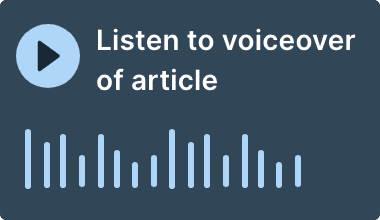Economists in the world’s leading countries are currently locked in a debate about the fate of the US economy and its global influence. The worst effects of the Ukraine war on raw materials have now passed and commodity prices have largely declined to pre-war levels. With the onset of the first anniversary of Putin’s illegal war, the horrors in Ukraine have retreated to the realm of geopolitics.
This presents new dangers as China’s involvement and future influence over European affairs grows in parallel to the actions by the usual rogue states, Iran and North Korea, arming Russia. This is a clear threat to the rules-based world order. George W. Bush’s “axis of evil” is gaining a new dimension as these countries feel protected from the “west” by Russia. And Europe’s geopolitical influence is such that the Old Continent has no choice but to seek protection from the USA.
But the effects of this new geopolitical dimension on world inflation are no longer significant, at least not for the moment. Nonetheless, and although headline inflation is on a steadily declining path, core inflationary pressures have stubbornly persisted, and these are largely attributed to the well-rehearsed tightness of labour markets in developed economies. The modern attitude to work and the workplace has fundamentally changed since the onset of the Covid pandemic.
US economic statistics regarding growth have been as encouraging as inflation numbers have been persistent. Payroll data, retail sales and auto sales have surprised on the upside. Is this due to warm weather or the catch-up effect to services demand, both being temporary? Note that the services sector contributes 75 per cent of US GDP.
January data for restaurants, bars, etc., were correspondingly strong. The same applies to services PMI versus manufacturing PMI. Services employ more people than manufacturing – hence the strong non-farm payroll numbers. The transition to services and away from manufacturing is the natural process of reversal from the Covid years in which locked down consumers purchased durable goods, such as computers, in large quantities. When this transition to services will have run its course, labour market tightness will weaken. The transition has taken longer than expected.
This is why bond markets have reversed their year-to-date gains as yields have risen sharply in the past few weeks. The difference of opinion between bond markets and leading central banks has given the first round to the latter (see “The clash of the titans”), although many observers view current bond market weakness as a longer-term buying opportunity.
The world liquidity situation had also improved until most recently. The external value of the US dollar had undergone a sharp decline, thus priming the pump of emerging market economies and financial markets. Most recently, however, a potential change of course has come to play with the advent of the new governor of the Bank of Japan, Mr. Kazuo Ueda. Japan had continued the policy of negative interest rates in its eternal quest to raise the level of structural inflation. A recent announcement whereby the Bank would abandon risk curve control sent bond yields higher, thus making investments in government bonds more attractive to local investors (who, for years, have gone by the name of “Mrs. Watanabe”). As a result of higher current and potentially even higher future local yields, investing in foreign bonds no longer holds the same financial attraction for Mrs. Watanabe. This raises fears that she will be repatriating her foreign investments and thereby pushing back on the hitherto improved international liquidity situation.
The combination of Mrs. Watanabe, stubbornly high core inflation and hawkish central banks has raised fears in financial markets that calling a light at the end of the tunnel may well prove to have been premature.
Stock markets, on the other hand, have changed their thinking with regard to investments in long-duration assets. This applies in particular to such assets with pristine balance sheets and steady sales and earnings growth. As quality growth companies survived the last two years largely unscathed as an asset class and proved that their business models and market position represent a substantially lesser risk to such investors who are ready, able and willing to take the long-term view, the year 2023 has begun well.
This comes as a result of another good earnings season for quality growth businesses in which most recent reports have shown, in most cases, to have been better than expected whilst their guidance for future earnings have surprised on the upside. This stands out when compared with the average US company.
Where last year share prices of such businesses were tormented by the relentless rise in long-term bond yields, the focus has switched to their earning power, which remains alive and kicking, each for their own reasons. A glance at long-term past returns of such investment portfolios shows that a bad year for share prices, due to factors beyond the control of quality growth companies, will not affect the underlying businesses in ways that many commentators predict and have predicted. This is reflected in the past long-term returns of their share prices.
Economists are now debating whether the world is heading for an inflationary bust or a deflationary boom. The former would see continued pressure on bond markets and share prices whilst the latter would welcome the return of the Goldilocks scenario and usher in a new golden age for investors in stock markets.
To the investor in quality growth businesses, considered by many as an asset class of its own, the discussion of inflationary busts or deflationary booms is not relevant to the underlying reasons why such businesses’ real value lies in their ability to generate strong and growing cash flows over the very long term.
It is likely that the encouraging rise in the year-to-date share prices of such companies is evidence of how markets are once again inching towards the long term view and beginning to separate the wheat from the chaff.
This is a marketing communication / financial promotion that is intended for information purposes only. Any forecasts, opinions, goals, strategies, outlooks and or estimates and expectations or other non-historical commentary contained herein or expressed in this document are based on current forecasts, opinions and or estimates and expectations only, and are considered “forward looking statements”. Forward-looking statements are subject to risks and uncertainties that may cause actual future results to be different from expectations.
Nothing contained herein is a recommendation or an offer or solicitation for the purchase or sale of any financial instrument. The material is not intended to provide, and should not be relied on for, accounting, legal or tax advice, or investment advice. The content and any data services and information available from public sources used in the creation of this communication are believed to be reliable but no assurances or warranties are given. No responsibility or liability shall be accepted for amending, correcting, or updating any information contained herein.
Please be aware that past performance should not be seen as an indication of future performance. The value of any investments and or financial instruments included in this website and the income derived from them may fluctuate and investors may not receive back the amount originally invested. In addition, currency movements may also cause the value of investments to rise or fall.
This content is not intended for use by U.S. Persons. It may be used by branches or agencies of banks or insurance companies organised and/or regulated under U.S. federal or state law, acting on behalf of or distributing to non-U.S. Persons. This material must not be further distributed to clients of such branches or agencies or to the general public.
Get the latest insights & events direct to your inbox
"*" indicates required fields





